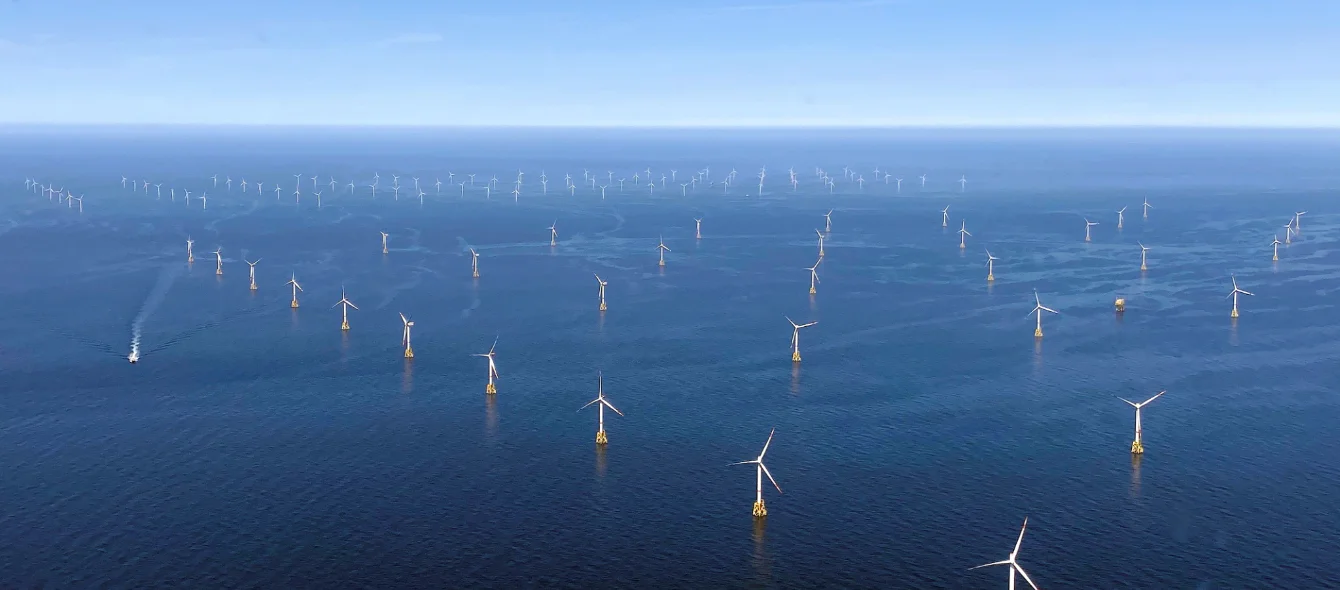The wide-ranging slowdown and redistribution of wind at and upstream of obstacles referred to as the Global Blockage Effect “GBE” is a topic hotly debated in the offshore wind sector. The atmospheric phenomenon causes the wind to decelerate before it reaches the first turbines, while accelerating it elsewhere. This can result in a reduction in the electricity yield of offshore wind farms. An international research consortium including just over a dozen partners has dedicated itself to exploring this phenomenon, and has recently won four new participants: energy companies Ocean Winds, Ørsted und TotalEnergies as well as The Crown Estate have joined the Global Blockage Effect in Offshore Wind (OWA GloBE) project led by RWE.
Thanks to the new partners, measurements can be expanded and more data can be collected for this unique project. It looks into the interplay between offshore wind turbines and the atmosphere in two RWE wind farms in the German Bight. The investigation centres on how the wind passes through, over and around a large-scale wind farm at open sea.
Global Blockage Effect – a phenomenon with economic consequences
There is (broad) consensus in the sector that GBE exists. What is debated, however, is how pronounced it is and how the phenomenon actually impacts on electricity generation. After all, the effect is rather small and difficult to measure. One cannot even perceive it based on historic measurement data.
Project goal: improved understanding of the effect
The effect may be difficult to detect, but it has economic consequences nevertheless. This is because any uncertainty surrounding wind turbine and wind farm performance can drive up the cost of capital for offshore sites. If GBE is overestimated, offshore wind projects will be devalued financially. This is why the collected data should also help to develop improved models.
“The whole offshore wind industry will benefit immensely from this project as it will help us gain a better understanding of the Global Blockage Effect. OWA GloBE will allow us to close existing knowledge gaps and reach an industry-wide consensus on an effect that has a high impact on the planning and operation of offshore wind farms”, declares Renske Ytsma, Head of Offshore Development Continental Europe at RWE, in the project’s most recent publication, which touches on the addition of new project partners and the extension of the offshore measurement campaign.
Measurements at two RWE wind farms using cutting-edge technology
As part of the OWA GloBE project, measurements are carried out in the Heligoland wind farm cluster in the German Bight – more specifically the RWE wind farms Nordsee Ost and Amrumbank West. These two wind farms are currently separated by a four kilometre strip of empty sea, referred to as the ‘Kaskasi Gap,’ where RWE is constructing the Kaskasi wind farm, which is scheduled to go online by the end of 2022.
The Kaskasi Gap enables a unique experimental setup in which modern measurement methods such as Dual Doppler LiDAR (Light Detection and Ranging, a radar-like method for optical air speed measurement) can be combined with wind turbine production data. “The GloBE project is undertaking a significant measurement campaign, both in terms of its scale and its unique setup, to increase primary data on how the Global Blockage Effect impacts yield in operational wind farms,” explains Jan Matthiesen, Director Offshore Wind at Carbon Trust. The consulting firm assists businesses, governments and organisations around the world in transitioning to a low-carbon society.
Bigger budget, longer measurement period, more data
The team at Carbon Trust is supporting the realisation of the project, which is backed by RWE, the newly won partners and the initial project participants, which are wind farm developers EDF Renouvelables, EnBW, Equinor, ScottishPower Renewables, Shell and Vattenfall as well as research and industrial partners DTU Wind Energy and Vaisala.
With the help of the four new partners and a cooperation with two publicly funded research projects, the budget including in-kind contributions has grown substantially, rising from 3.9 to 5.9 million euros. The measurement period has been extended by four months. This means that much more data can be collected than originally envisaged.
Data to improve computational models
“The decisive phase will be how this data can then be used to help improve existing computational models which are used to inform the cost of finance for future wind farms”, adds Jan Matthiesen. A group of experts will draw on the data to review and improve various computational models. Some of these models already provide a basis for making investment decisions, with others representing the next generation of models. With the help of this data, experts want to gain a better understanding of how wind blows within, above and around wind farms.
